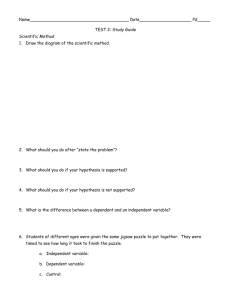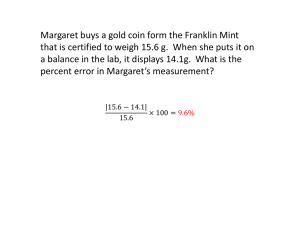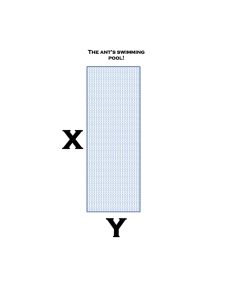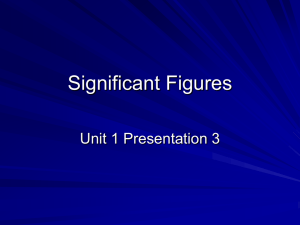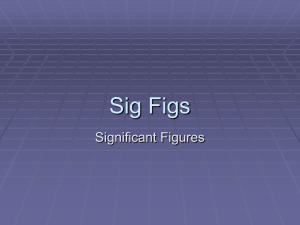Chapter 1 – Science Skills
advertisement
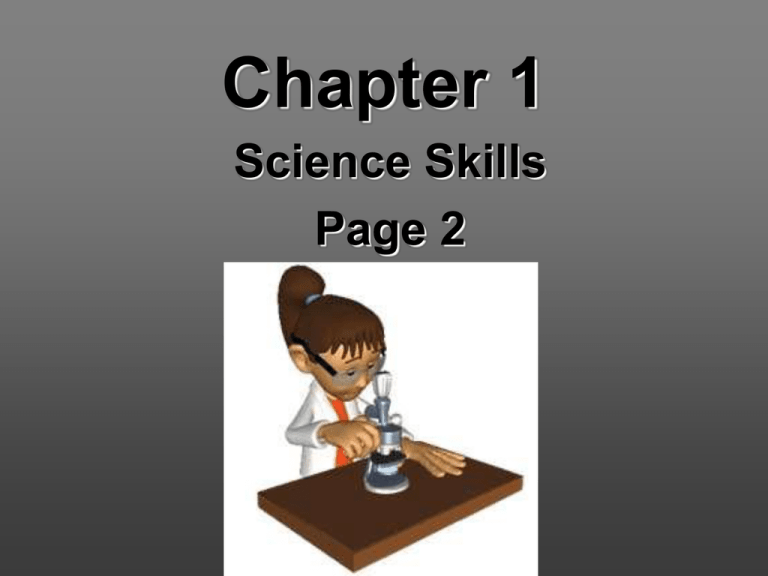
Chapter 1 Science Skills Page 2 1.1 What is science? (3:54) Science From Curiosity • Science - system of knowledge & methods used to find it • Begins w/ curiosity…ends w/ discovery • Curiosity provides ?’s • Observing/measuring…means to find answers Science and Technology Science and Technology (1:39) • Science / technology interdependent – Advances in 1 leads to advances in the other Branches of Science Natural Science Physical Science •Chemistry •Physics Earth and Space Science •Geology •Astronomy •Life Science •Biology Big Ideas of Physical Science • Space and Time – universe age – size • Matter and Change – Small amt for universe – Volume/mass – Atoms • Protons, neutrons, electrons • Forces and Motion – Push/pull causes change – Laws will explain • Energy – Many forms – Drives motion – Transferred/never destroyed Sec 1.2 Using a Scientific Approach p. 7 • Scientific Method - organized plan for gathering, organizing, & communicating info – Goal….to solve problem or better understand observed event Copy flow chart into your notes A Scientific Method • Making Observations – Observation – info that you obtain through your senses – Inference – conclusions drawn based on observations • Develop ? / problem • Form Hypothesis – proposed answer to ? – testable • Testing a hypothesis – Manipulated (independent) variable – changed by you to test hyp. – Responding (dependent) variable – changes in response to man. var. – Controlled variable – factors kept constant to test hyp. – Control Group –setup run w/o man.var. • Draw Conclusions – does data support hyp? • Develop Theory – Scientific Theory – well-tested explanation for observations or experimental results • Tells “why” • Theories are never “proved” • Theories may be revised or replaced Scientific Method Rap Scientific Laws • Scientific law – statement summarizing pattern found in nature • explains “what” • DOES NOT attempt to explain observed pattern in nature Scientific Models • Scientific Models - makes easier to understand things too hard to observe directly – Ex. Atomic models, models of the solar system, cell models, etc. The Scientific Method (12:07) Sec 1.3 Measurement p. 14 • Scientific Notation – makes very large / very small #’s easer to work w/ –expressing value as # from 1-10 x power of 10 • Ex. 300,000,000,000 = 3x1011 • .00000006 = 6x10-8 SI Units of Measurement (Metric) • Length – straight line dist. btwn 2 pts. –meters (m) • Mass – amt. of matter in object –grams (g) • Volume – amt. of space occupied by object –liters (L) Measuring Temperature • 3 temp scales: – Fahrenheit • H2O freezes @ 32°F • boils @ 212°F – Celsius • H2O freezes @ 0°C • Boils @ 100°C – Kelvin (SI base unit for temp) • 0 K – lowest possible temp (= -273.15°C) • K = °C + 273 Significant Figures • Sig Figs are digits in a # that contribute to its precision. • A calculation can only be as precise as it’s LEAST precise measurement. Sig Fig Rules • ALL non-zero #’s are always significant. • Any zero btwn two sig figs is significant. • Trailing zeros are only significant in the decimal portion. – 13.450 (this zero is a sig fig) – 1400 (these zeros are NOT sig figs) How many sig figs? 1) 2) 3) 4) 5) 6) 7) 50.5 26.25 10,100 500 650 .050 1.0250 Limits of Measurement • Precision – gauge of how exact a measurement is • Accuracy – closeness of a measurement to the actual value 1.4 Presenting Scientific Data p. 22 • Scientists organize data using data tables and graphs. Data Tables • Relate the manipulated and responding variables Line Graphs • Show changes in related variables • Manipulated (Independent) variable is plotted on the x-axis. • Responding (Dependent) variable is plotted on the y-axis. Bar Graphs • Often used to compare a set of measurements, amounts, or changes. Circle Graphs • Show how part relates to the whole • Entire circle represents 100%, and slices represent percentages that make up the 100%

